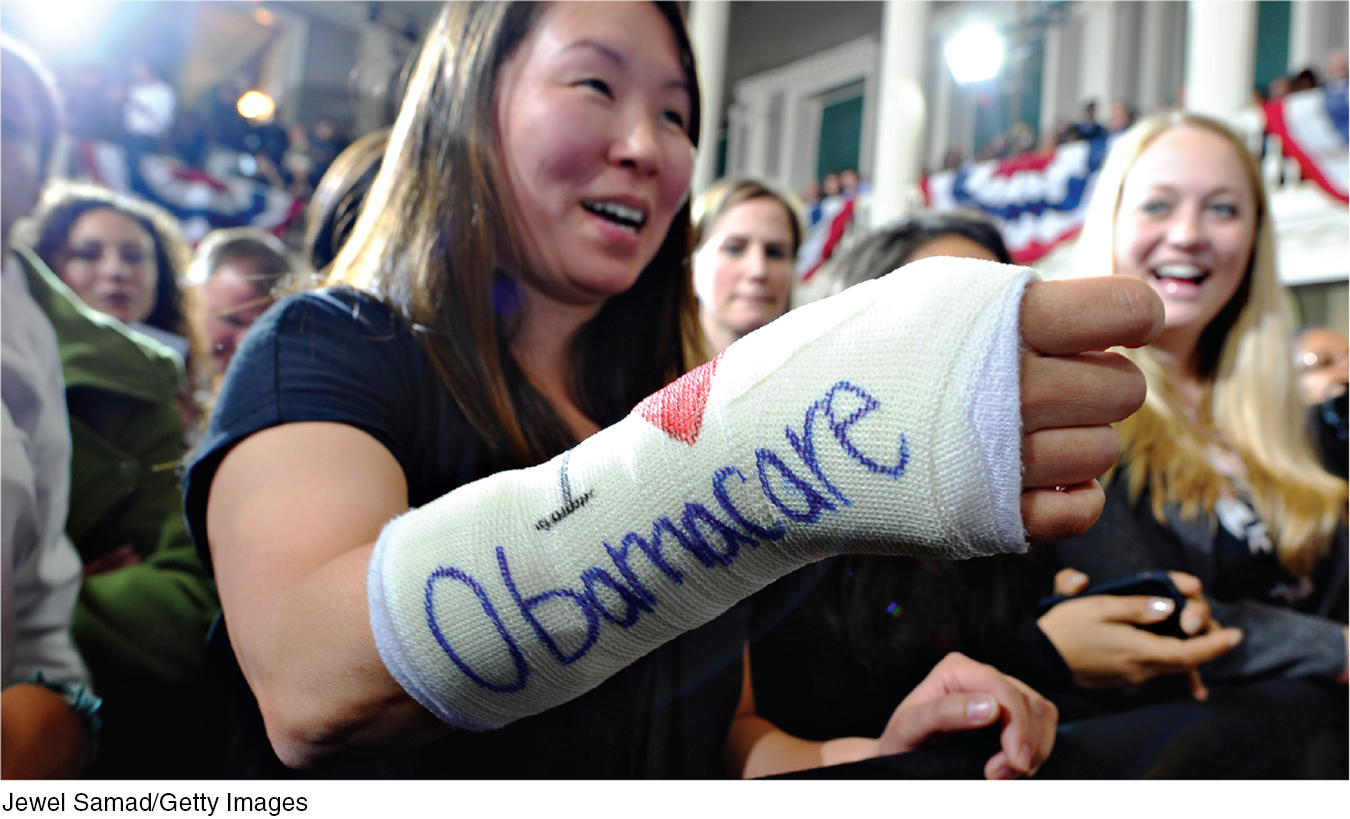Chapter Introduction
315
Poverty, Inequality, and the Welfare State
CHAPTER 11
THE COMING OF OBAMACARE

What You Will Learn in This Chapter
What the welfare state is and the rationale for it
What defines poverty, what causes poverty, and the consequences of poverty
How income inequality in America has changed over time
How programs like Social Security affect poverty and income inequality
The special concerns presented by health insurance
Why there is debate over the size of the welfare state
 interactive activity
interactive activity
ON JANUARY 1, 2014, LOU Vincent finally got health insurance. Vincent, a resident of Ohio, had Type II diabetes, and as a result no insurance company was willing to offer him a policy, leaving him uninsured for 10 years. “We got 30 denial letters,” his wife told a reporter. So what changed at the beginning of 2014? A major new government program, the Patient Protection and Affordable Care Act—
Tens of millions of Americans receive health insurance directly from the government, mainly from Medicare (which covers those 65 and older) and Medicaid (which covers the poor and near-
In addition to regulating insurers, the ACA imposes new rules on the public: U.S. citizens and permanent residents are required to purchase insurance that meets certain minimum standards. To keep policies affordable for lower-
Overall, Obamacare was a substantial expansion of the government’s role in the economy. Specifically, it marked a major expansion of the welfare state, the collection of government programs designed to limit economic insecurity and/or reduce economic inequality.
There is intense political dispute about the appropriate size and role of the welfare state. Indeed, you can argue that this dispute is what politics is mainly about, with liberals seeking to expand the welfare state’s reach and conservatives seeking to scale it back.
So opinions about Obamacare, not surprisingly, are deeply divided. It’s part of a larger debate in contemporary America, in which politicians often disagree about how much help financially troubled families should receive to pay for health care, housing, food, and other necessities. Yet there is a broad political consensus that these families should receive some help. And they do. Even conservatives generally accept a fairly extensive welfare state as a fact of life. Governments of all wealthy nations play a large role in everything from health care, to retirement, to aid to the poor and jobless.
We start this chapter by discussing poverty, inequality, and the rationale for welfare state programs. Then we look at the two main programs in the United States: income support programs, of which Social Security is by far the largest, and health care programs, dominated by Medicare and Medicaid, but with the Affordable Care Act playing a growing role.